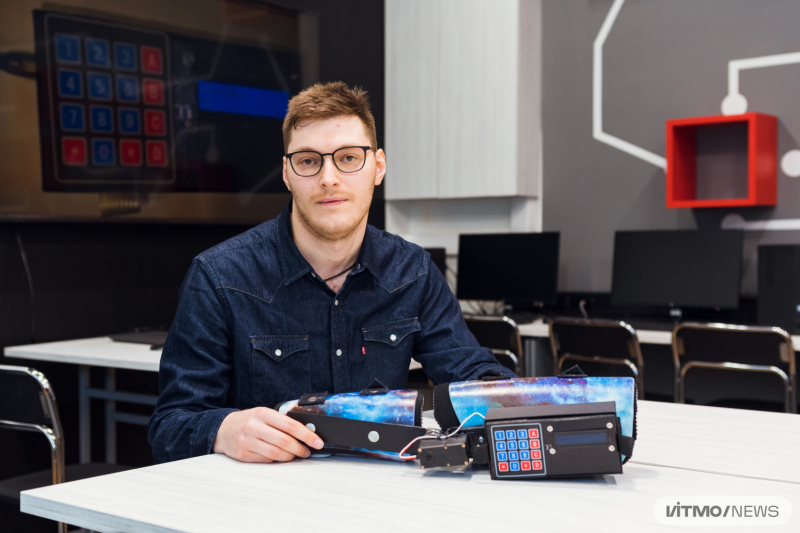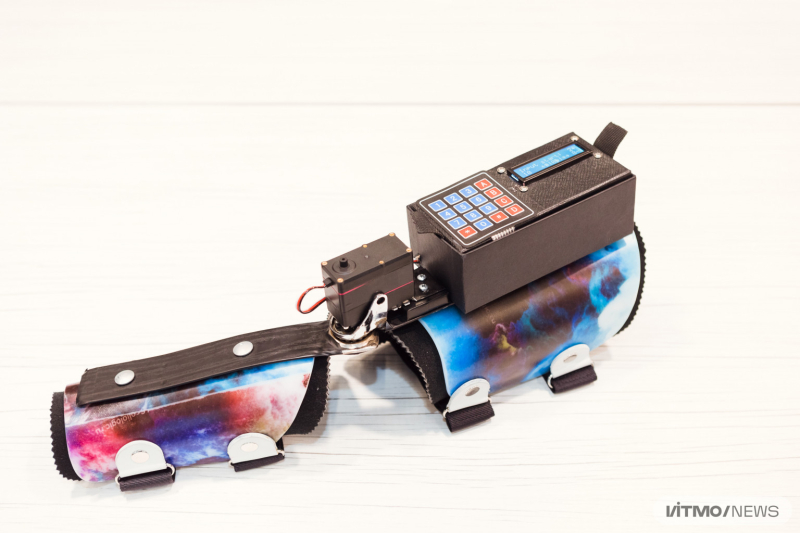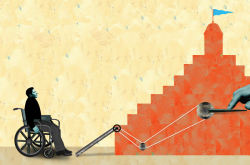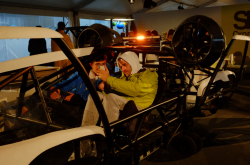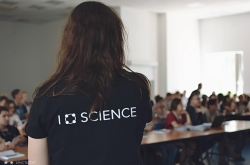In spite of all odds
The new prosthesis is meant for people with motor disorders, such as pathological muscle tone distribution, lower muscle tone, and disrupted interaction between agonist (main muscles) and synergist (muscles working jointly with others) muscles. Such conditions can be caused by strokes or infantile cerebral paralysis. With the prosthesis, it’s possible to avoid muscle dystrophy, grow muscular mass, and increase joint mobility.
Knowing first-hand what life with cerebral palsy can be like, Artem Meinov came up with the idea for the prosthesis as a third-year Bachelor’s student at ITMO. Back then, his project was supported by Arkady Kluchev, an associate professor at the Faculty of Software Engineering and Computer Systems. Having assembled a team, Artem successfully built the first prototype, presenting it at several conferences, including those at the Higher School of Economics and Lomonosov Moscow State University. However, the device didn’t receive a warm welcome there, which was discouraging for the creators; eventually, the team fell apart.
In time, Artem entered the Software Engineering Master’s program at ITMO. As a student there, he went on an exchange program to the University of Innsbruck, Austria. There, his project received a new life with support from the university’s lecturers. His expertise even earned Artem a position as a consultant for Bachelor’s students at the university’s Management Center.
Apart from that, Artem showcased his idea at the Technical University of Munich, reaching out to Prof. Dr. Nassir Navab, a specialist in medical informatics. It turned out that the researchers in Munich had already been working on a similar system, so Artem was offered to enter a joint project. Unfortunately, soon after he returned to St. Petersburg in February 2020 to defend his thesis, the borders were closed due to pandemic restrictions. The project was to be postponed yet again.
Last year, experts from ITMO’s Center for Inclusive Education suggested that Artem present his prosthesis at the National Forum for the Rehabilitation Industry and Universal Design in Moscow. By that time, Artem had completed the third edition of his novel device.
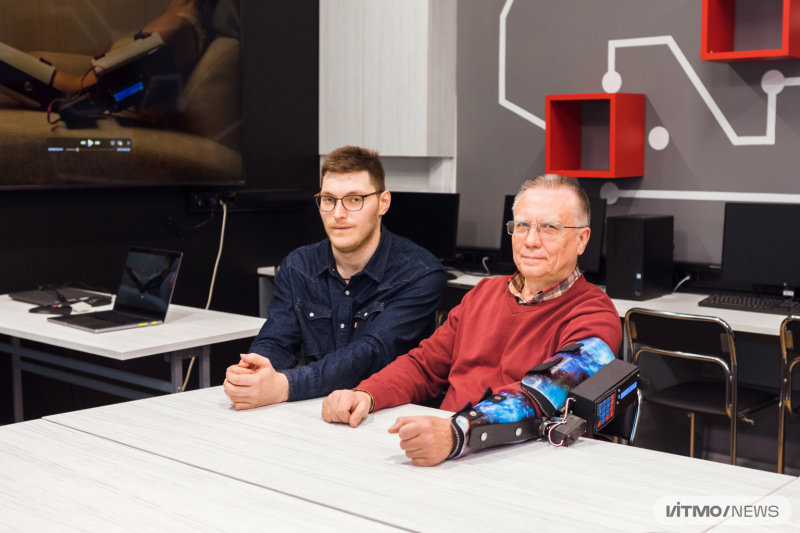
Artem Meinov and Igor Bessmertny. Photo by Dmitry Grigoryev / ITMO.NEWS
How it works
The prosthesis consists of several components: two elements attached to the shoulder joint and the forearm, respectively, and a hinge that connects all the pieces together. Electronically speaking, it includes a programmable chip, a keyboard, a screen, an input/output system, as well as a servomotor, which puts the machine into action – helps a user bend an arm in the elbow joint at a certain speed to reach a required angle. With a full charge, the device can run for up to 30-40 minutes, with an average training session lasting a maximum of 20 minutes.
To start the training, a rehabilitologist sets the prosthesis into a position comfortable for the user, taking into account their range of motion. After that, the specialist defines the final position for the prosthesis, namely the maximum extension angle that won’t harm the patient, as well as their training time, intensity, and speed. All these parameters are tailored individually. The specialist inputs information on the keyboard and can then see it on the display.
The developers note that the existing alternatives have a number of crucial drawbacks. As a rule, they are cumbersome and inconvenient and fail to reproduce the full spectrum of motion. Besides, they are stationary and involve all the muscles of the body. Whereas the prosthesis developed by Artem Meinov is mobile and compact, let alone more functional. The device lets users adjust all the parameters for themselves.
“I want to develop rehabilitation medicine for people with physical disabilities because this market is full of outdated and unaffordable products, which are often created by people who don’t know what their users need. Hence, we have lots of troublesome devices. I myself tried on a few simulators and standing frames like that at the forum in Moscow. Unlike those creators, I understand the needs of this group of people because I myself went all the way from undergoing physical therapy to playing sports. Back when I was doing my therapy, 15-20 years ago, there was nothing but treadmills, elliptical trainers, steppers, and so on,” shares Artem Meinov.
Read also:
Congress of Young Scientists: Projects in Inclusive Education
Music for Everyone: ITMO Students Create Guitar for People with Disabilities
Prospects
So far, the technology can be used exclusively to exercise the arm muscles, however, the developer is already working to create custom alternatives for wrists and fingers, too. Among the developer’s goals is starting mass production of his product. To make it possible, Artem Meinov plans to register his idea as a medical rather than a rehabilitation device because it will let him improve his product, for instance, by using hypoallergenic materials to keep users’ hands sweat- and allergy-free.
“The prosthesis has all the chances to enter the market. In fact, some practicing medical specialists and manufacturers have already expressed their interest in the product. In the future, the technology can be adapted for the leg muscles and joints, as well as equipped with a remote monitoring system. Artem still plans to experiment with components and materials, so it’s hard to tell the final price right now but I’m sure it’ll be much more affordable than its analogs,” concludes Igor Bessmertny, Artem's PhD supervisor and a professor at ITMO’s Faculty of Software Engineering and Computer Systems.
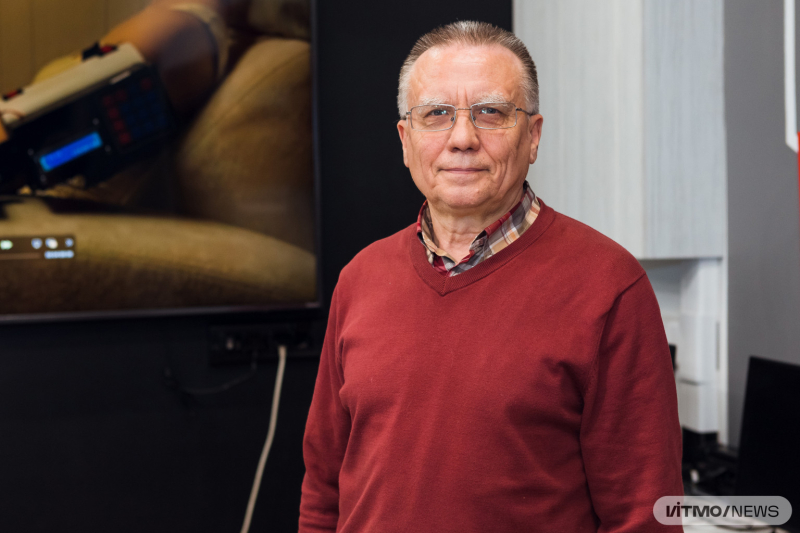
Igor Bessmertny. Photo by Dmitry Grigoryev / ITMO.NEWS
